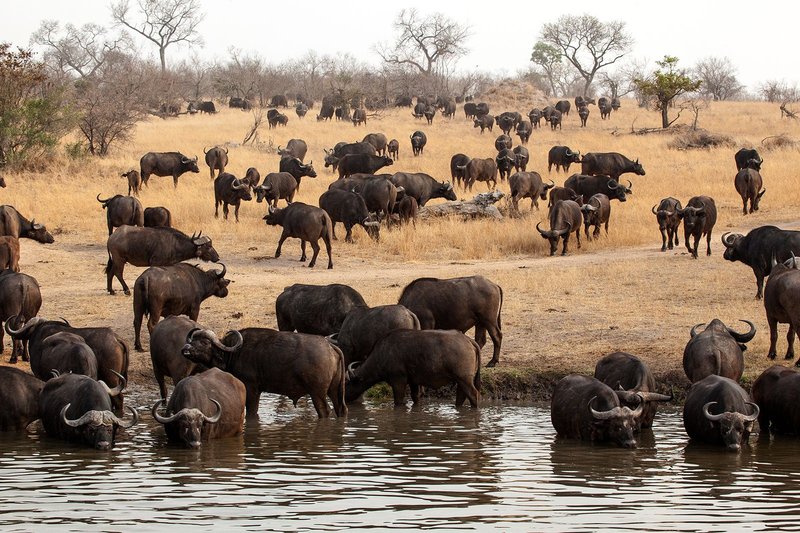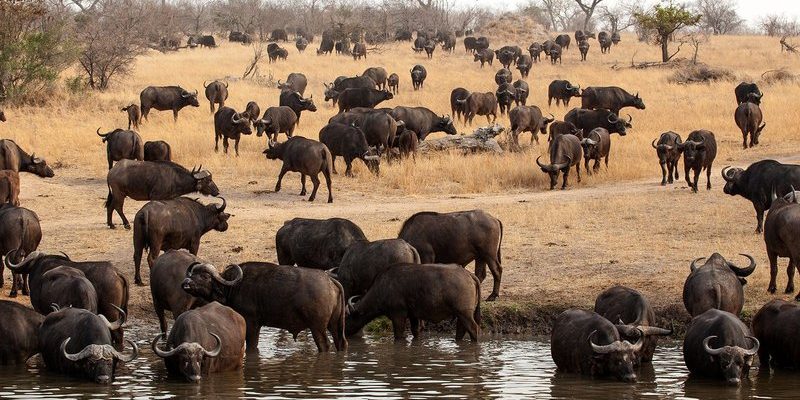
Imagine being in a place where food and water are scarce, temperatures can plummet, and storms can sweep in without warning. You might wonder how any creature could make it through such harsh environments. Well, buffalos have developed a range of fascinating adaptations that allow them to not just survive, but thrive. They have learned to cope with extreme weather, find food in unforgiving terrains, and even maintain social structures to support one another. Let’s dive into their world and explore the impressive ways buffalos tackle these challenges.
The Physical Adaptations of Buffalos
One of the first things that comes to mind when considering how buffalos survive is their physical adaptations. Buffalos have incredibly thick hides, which act like a natural coat against the cold. This insulation is vital during harsh winters, especially in areas like the Great Plains or mountainous regions. Their body structure also plays a role; they have large, muscular bodies that allow them to conserve energy and navigate tough terrains easily.
Additionally, buffalos boast strong legs and powerful hooves. These features enable them to travel great distances in search of food and water. Their hooves are not just for walking; they help them dig through snow or hard ground to reach edible grass or other plants. Honestly, when you see them move, it’s like watching a tank in action.
You might also be surprised to learn that buffalos have excellent senses. Their keen eyesight and acute sense of smell help them stay alert to potential dangers, such as predators. This sensory awareness is crucial when they are out in the wild, as it helps them avoid threats and find resources more efficiently.
Feeding Strategies in Scarce Environments
Feeding is another critical aspect of how buffalos survive in harsh environments. In places where food is limited, buffalos have evolved to be opportunistic feeders. They eat a wide variety of plants, including grasses, shrubs, and even bark if necessary. This flexibility in diet allows them to adapt to different environments and seasons.
During dry spells, buffalos can travel considerable distances to find food. They often follow migratory patterns, moving to areas where fresh grass is available. Here’s the thing: buffalos are not solitary creatures. They typically move in groups, which boosts their chances of finding food. Working together, they can cover more ground and utilize their combined strength to access tough-to-reach plants.
In addition, buffalos are known to dig through snow to reach buried grasses. Their strength and determination mean they won’t give up easily. This behavior not only helps them find food but also demonstrates their adaptability in extreme conditions, which is essential for survival.
Social Structures and Living in Herds
Speaking of living in groups, buffalos have a fascinating social structure that significantly contributes to their survival. They are known to form herds, which provide safety in numbers. When they stay close together, it’s harder for predators like wolves or bears to target an individual. There’s a sense of unity among the herd that’s quite impressive.
Within these herds, buffalos establish social hierarchies. Older, more experienced individuals often take the lead, guiding the group to water and food sources and determining the herd’s movement. This communal living ensures that resources are shared and that younger buffalos learn from their elders. Picture it like a family, where everyone looks out for one another.
Moreover, herd behavior supports calf survival. Young buffalos are protected not just by their mothers but by the entire group. When danger is near, adult buffalos will form a protective circle around calves, showcasing their instinct to care for each other in tough times. It’s a remarkable example of cooperation among animals.
Weather Resistance and Coping with Harsh Conditions
Weather can be one of the most challenging factors buffalos face. From scorching heat to bitter cold, these animals have some incredible adaptations. Buffalos have a natural resilience to extreme temperatures, thanks in part to their thick fur. When winter rolls around, their fur grows denser, keeping them warm even in freezing conditions. During summer, their skin can sweat, helping to regulate their body temperature.
Interestingly, buffalos also have a habit of rolling in mud or dust. This behavior serves several purposes. First, it cools them off on hot days. Second, it creates a protective layer against parasites and sunburn. Think of it as a natural sunscreen! This little trick highlights their ability to use their environment to their advantage, ensuring they stay comfortable and healthy.
You might be wondering about their coping mechanisms during devastating storms or harsh weather. Buffalos tend to seek out natural shelters, like valleys or forested areas, which offer some protection from wind and rain. Their adaptability ensures that they can weather many storms—literally and metaphorically.
In summary, buffalos are nothing short of remarkable when it comes to surviving in harsh environments. Their physical adaptations, flexible feeding strategies, strong social structures, and weather resistance all contribute to their outstanding resilience. These animals demonstrate that survival isn’t just about brute strength; it’s also about clever strategies and community support.
Just like us, buffalos face challenges and adapt to overcome them. Whether they’re digging through snow or banding together for protection, these majestic creatures remind us of the power of adaptability and resilience. So, the next time you think about buffalos, remember the incredible ways they tackle life in the wild—it’s a lesson in survival that we can all appreciate.

